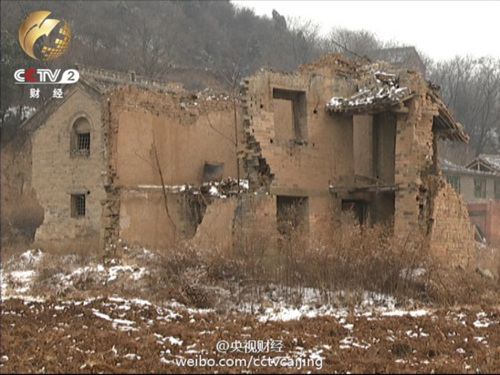 |
|
An old residential building is partially standing after demolition in Banpo village, Zezhou county, Jincheng city, North China's Shanxi province. [Photo/cctvcaijing] |
Jincheng government made a commitment on Friday to thoroughly investigate the destruction of cultural relics and to increase funding to protect them in an official response to an incident where an ancient village was demolished to make way for coal mining in Zezhou county in Jincheng, North China's Shanxi province.
Banpo, an ancient village in Zezhou, was known for its rich historic legacy, and there were over 60 ancient residences that dated back to the Ming and Qing dynasties. But in 2007, the village was completely demolished by the local government in the name of coal mining.
A recent report by CCTV pointed out the local government struck a deal with a local mining company, Jincheng Anthracite Mining Group, if the government would move Banpo village, which covers an area of 32 acres. The mining company could then excavate over 300 tons of coal from the site, which could be translated into over 1.5 billion yuan in profit for the local economy.
The incident aroused a wave of condemnation from local residents as well as the general public.
In the official response, it noted that Jincheng government soon established an investigation team after the report and promised to hunt down and punish the illegal destruction of cultural relics and historic sites.
To prevent the similar incidents from happening again, Jincheng government organized a special meeting to require the local bureau of cultural relics to strengthen protective efforts in different villages, townships, and counties.
In 2014, Jincheng government allocated a 20 million yuan special fund for culture relics protection in areas under its administration. To assist, local authorities in Zezhou will spend six million yuan annually for the protection of ancient buildings starting from this year.
Jincheng government also emphasized the importance of constantly enhancing awareness and the responsibility of protecting cultural relics, as well as the coordinated construction of new residential quarters and the protection of traditional villages.